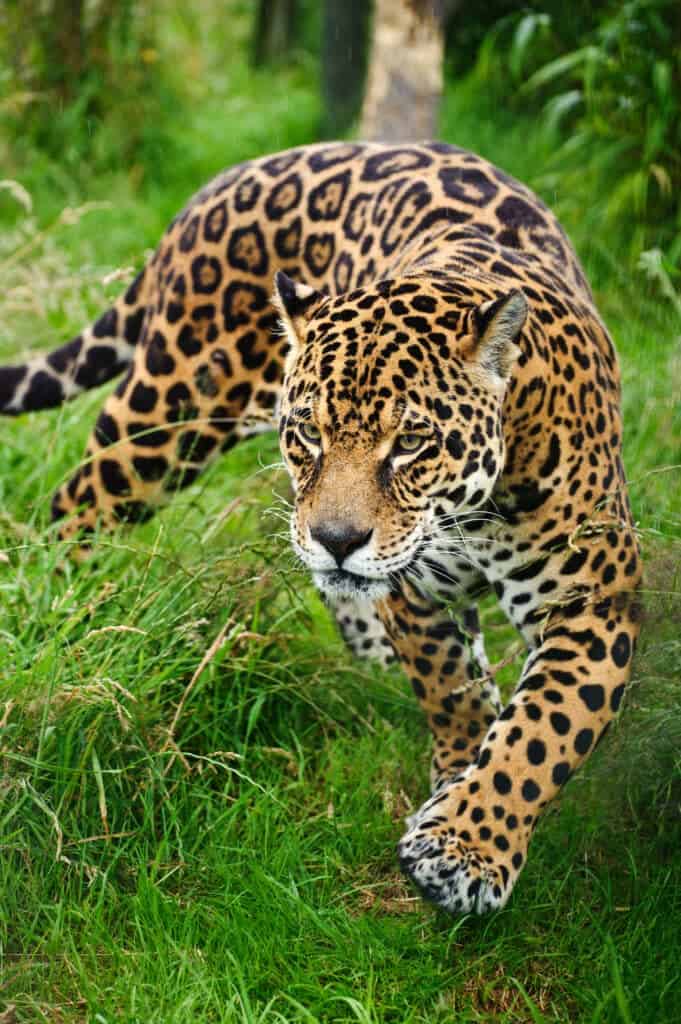Dangerous animals are rife within South America, a continent known for its rich biodiversity and lush ecosystems. And while many species contribute to the intricate tapestry of nature, some stand out for their formidable and potentially dangerous attributes. In this exploration, we delve into the realm of South America’s most dangerous animals, each possessing unique characteristics that command both respect and caution.
Jaguar (Panthera onca):
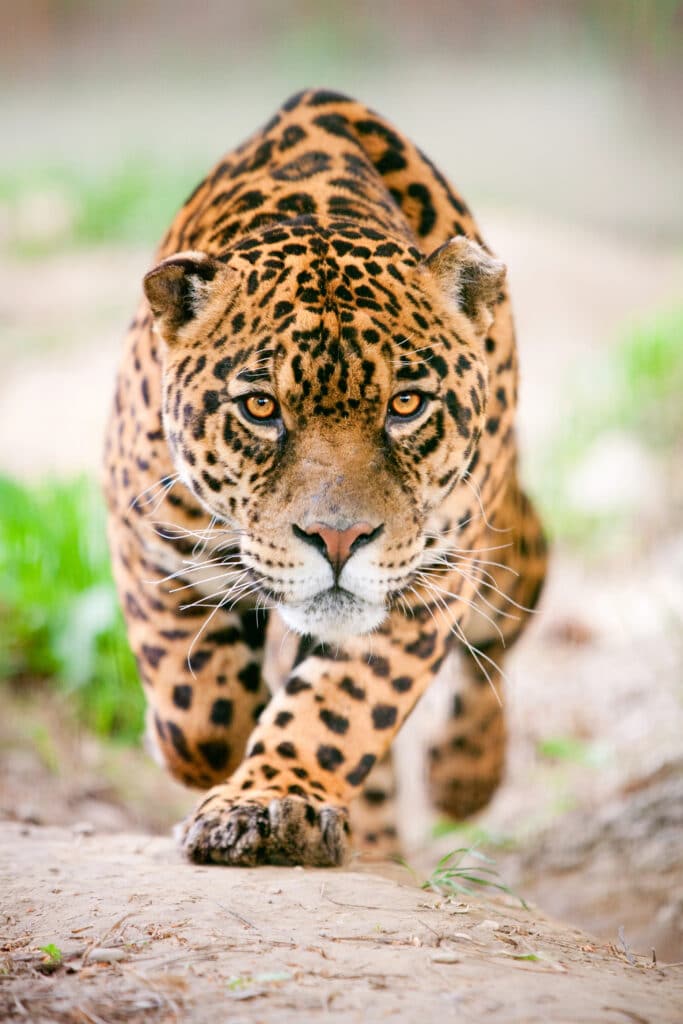
The jaguar, the largest big cat in the Americas, prowls the dense rainforests and grasslands of South America. Renowned for its remarkable strength, agility, and stealth, the jaguar is an apex predator with a preference for ambushing its prey. Armed with powerful jaws and an impressive bite force, jaguars are capable of piercing the skulls or necks of their victims, making them a formidable threat to a wide range of animals, including deer, capybaras, and even caimans.
Golden Poison Dart Frog (Phyllobates terribilis):
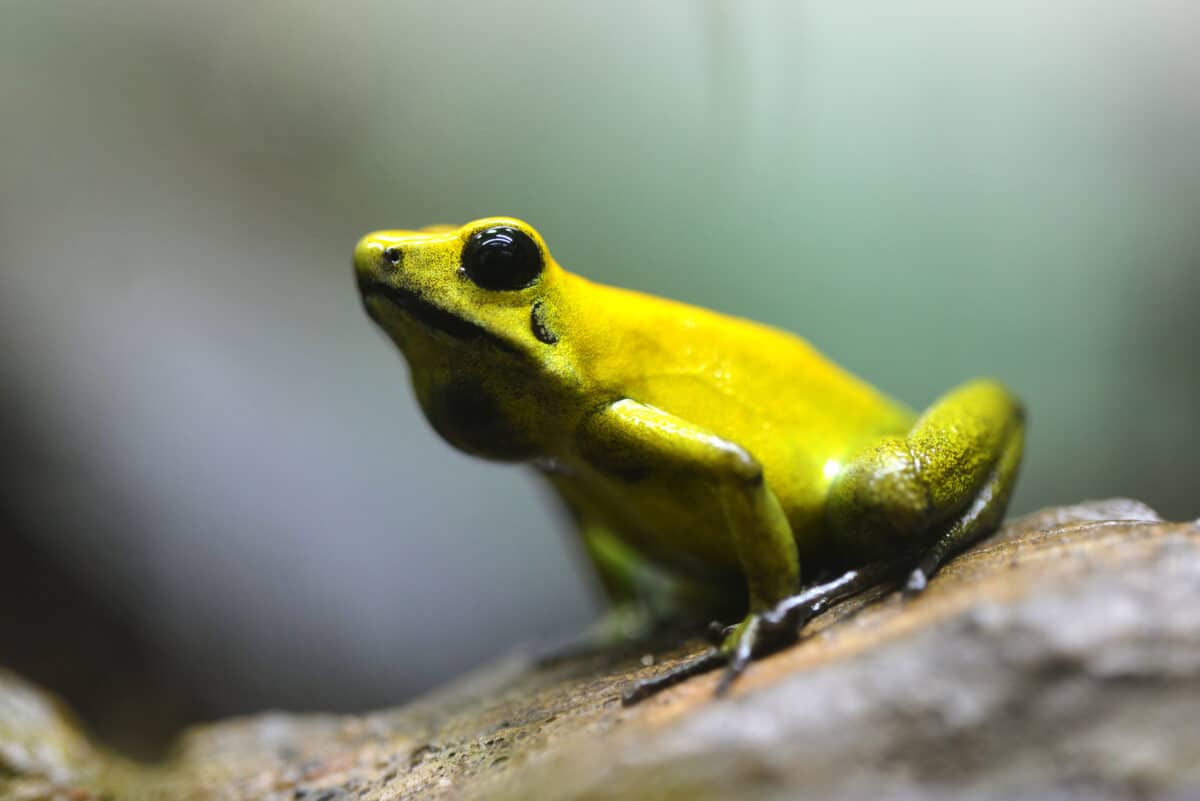
Despite its diminutive size, the golden poison dart frog is considered one of the most toxic animals on the planet. Native to the rainforests of Colombia, this brilliantly colored amphibian secretes potent neurotoxins through its skin. Indigenous tribes historically used the frog’s toxic secretions to poison their blowgun darts for hunting. The toxins can cause paralysis or even death, making encounters with these vibrant frogs a perilous affair.
Brazilian Wandering Spider (Phoneutria spp.):
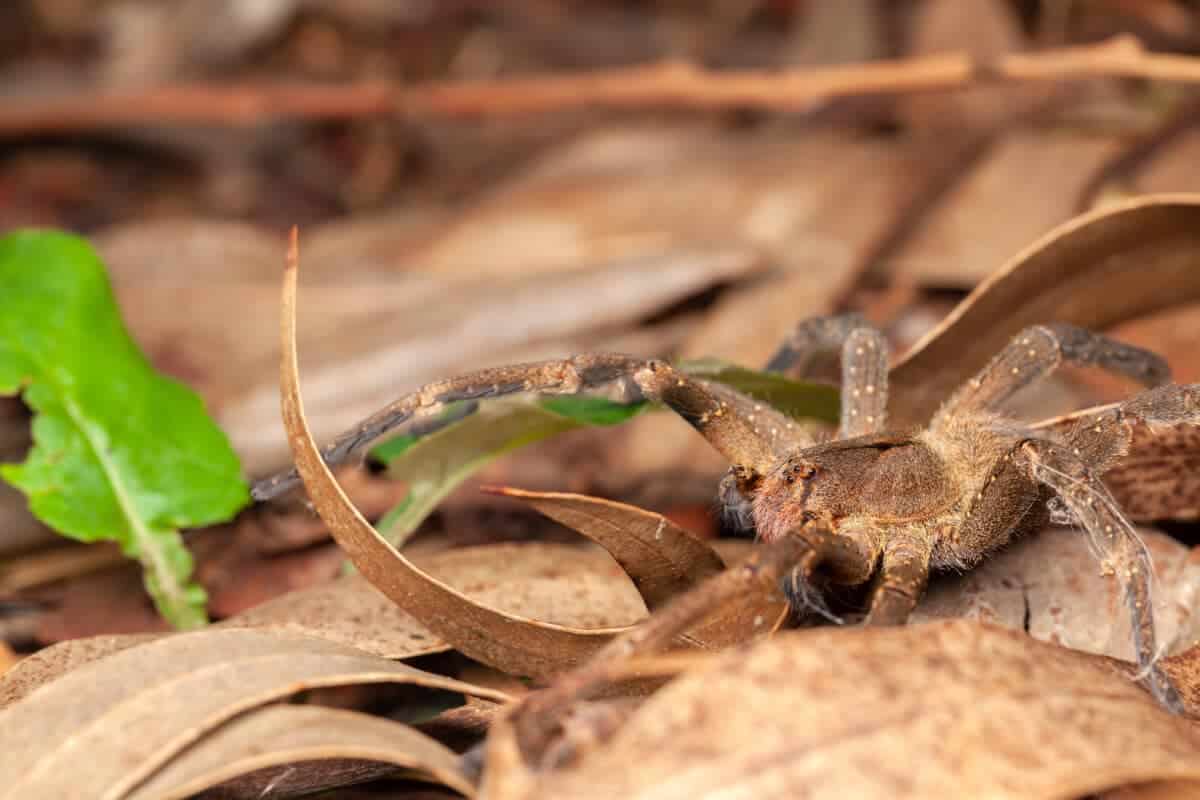
The Brazilian wandering spider, often cited among the world’s most venomous arachnids, is notorious for its aggressive behavior and potent venom. Found in the rainforests of South America, these spiders are known for their distinctive wandering habits, often venturing into human settlements. Their venom contains neurotoxins that can cause severe pain, paralysis, and, in extreme cases, respiratory failure. Despite their formidable reputation, fatalities from Brazilian wandering spider bites are rare, thanks to the availability of antivenom.
South American Bushmaster (Lachesis spp.):
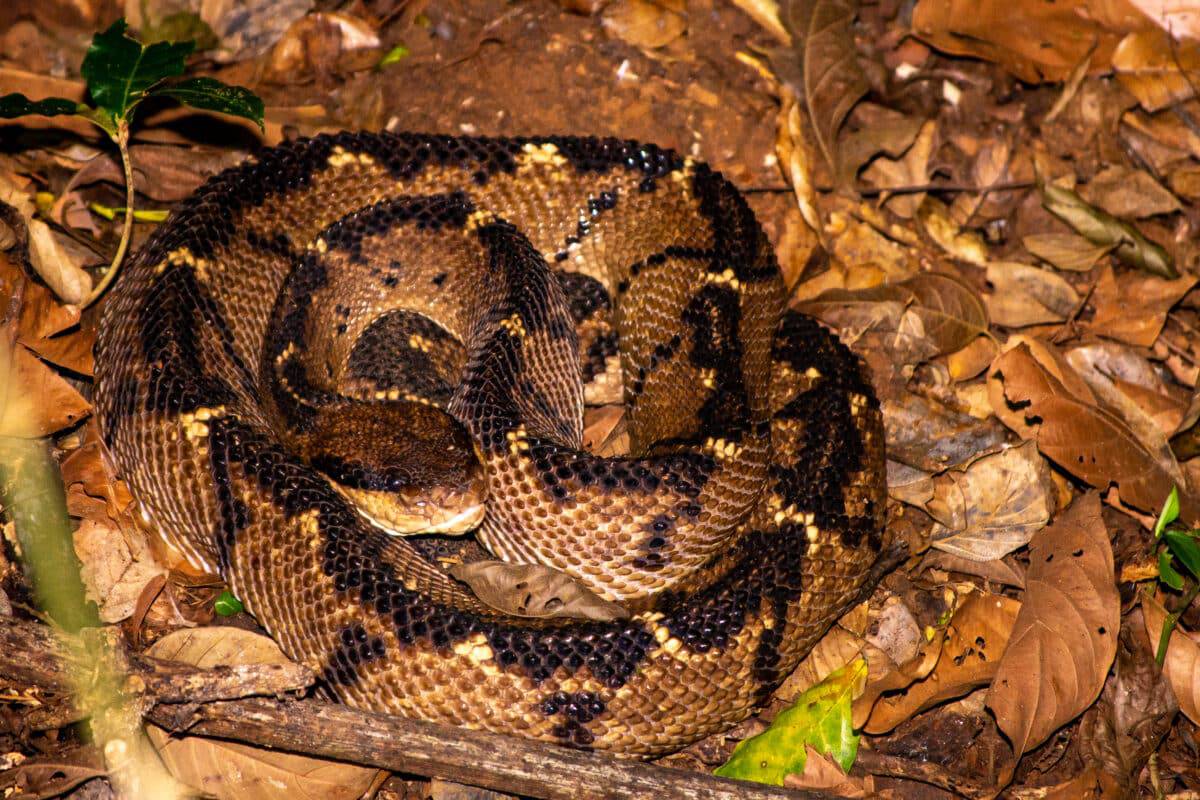
The South American bushmaster, a venomous pit viper, slithers through the forests of Central and South America. Renowned for its cryptic coloration and ability to blend seamlessly with its surroundings, this serpent is a master of ambush. Possessing the longest fangs of any snake in the Americas, the bushmaster delivers a potent hemotoxic venom that can lead to tissue necrosis and, if left untreated, fatal consequences. While encounters with humans are infrequent, the potent venom of the South American bushmaster demands respect.
Red-Bellied Piranha (Pygocentrus nattereri):
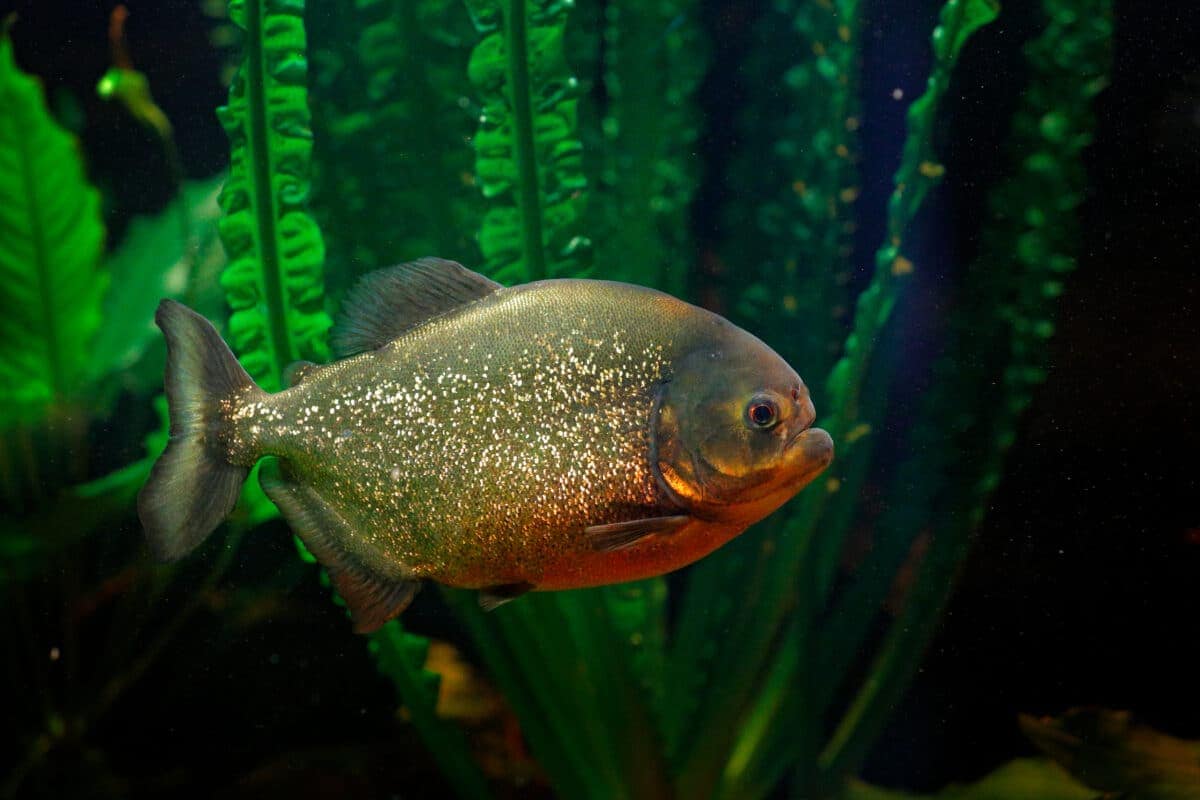
The red-bellied piranha, a freshwater fish found in the rivers of South America, has gained notoriety for its sharp teeth and carnivorous appetite. Despite their fearsome reputation, piranhas are more scavengers than ruthless predators, typically feeding on carrion and smaller fish. However, in certain conditions, such as during the dry season when food is scarce, they may exhibit aggressive behavior. Though rarely fatal to humans, piranha bites can cause painful injuries, and the sight of a school of piranhas feeding can be an intimidating spectacle.
In conclusion, South America’s most dangerous animals embody the wild and untamed essence of the continent. From the stealthy jaguar to the toxic beauty of the golden poison dart frog, each species contributes to the intricate balance of nature. While these creatures command respect for their potential dangers, understanding and appreciating their roles in the ecosystem is crucial for fostering coexistence and preserving the unparalleled biodiversity of South America.
If you enjoyed this write, you may enjoy these:
Join our Forum for free today!

- Second American Killed by Elephant in Zambia This Year - July 22, 2024
- Elderly Man Kills Grizzly Bear in Montana - July 22, 2024
- Missing Cat Found Weeks Later, 40 Miles Away - July 21, 2024

